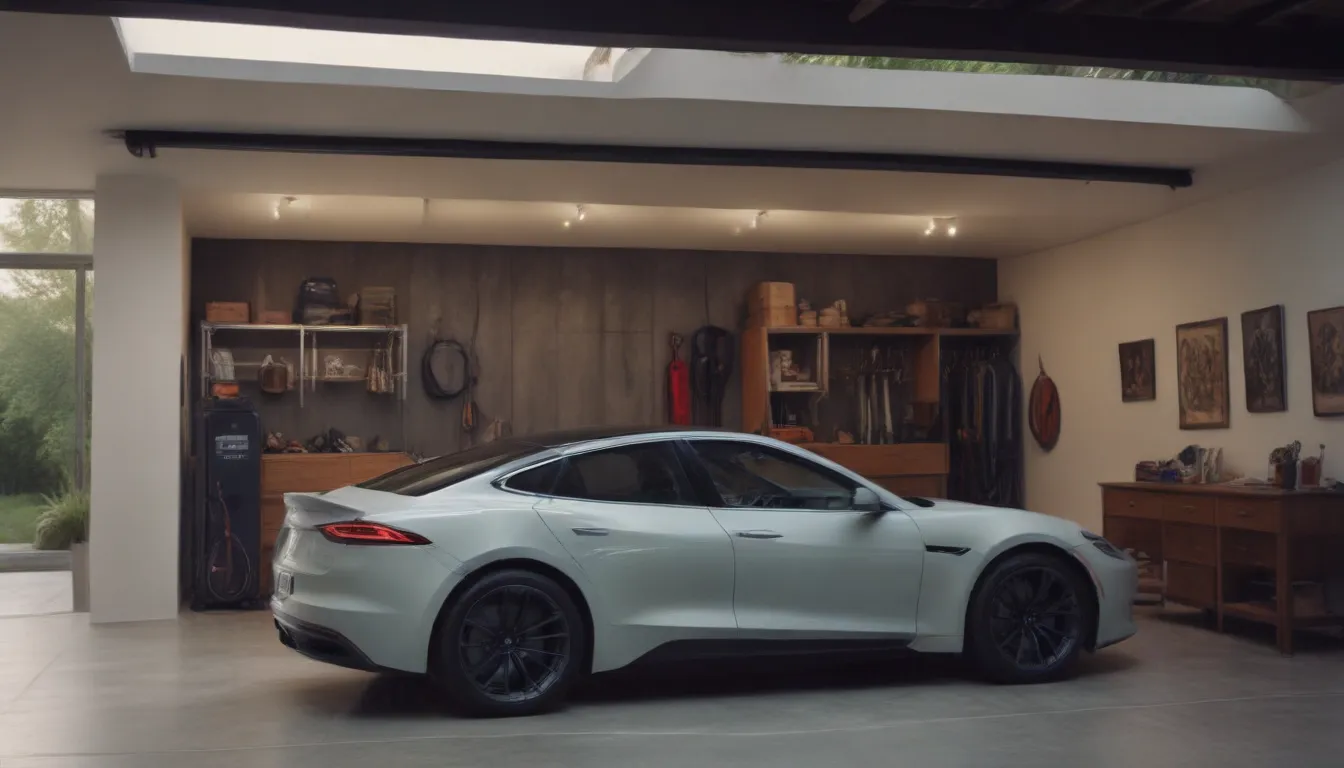The Ultimate Guide to Preparing Your Home and Garage for an Electric Vehicle

Are you considering making the switch to an electric vehicle? Electric vehicles are the way of the future, offering a quieter, cleaner, and more environmentally friendly option for transportation. With advancements in technology, electric vehicles now have a longer driving range than ever before, making them a practical choice for many drivers. In fact, California is even planning to implement a ban on the sale of gas vehicles by 2035, signaling a major shift towards electric transportation. Whether you already own an electric vehicle or are planning to purchase one in the future, it’s essential to prepare your home and garage for this transition.
Why You Need an EV Charger at Home
Public charging stations are convenient for charging your electric vehicle while you’re out and about. However, having an at-home charging option is essential for both convenience and emergencies. According to a recent survey, over 90% of electric vehicle drivers prefer to charge their vehicles at home. Here are a few reasons why having an EV charger at home is beneficial:
- Reliability: Charging your electric vehicle at home ensures that you have a reliable charging option without having to compete for public charging stations.
- Convenience: With an at-home charger, you can charge your vehicle whenever you want, without having to worry about the availability of public stations.
- Cost-Effective: Charging your EV at home allows you to pay a predictable electricity rate through your home utility bill, rather than paying fluctuating rates at public chargers.
How EV Chargers Work
Electric vehicles receive electricity from Electric Vehicle Service Equipment (EVSE), commonly known as an electric vehicle charging station. Your home-based EV charging station is not technically a charger, as electric vehicles have chargers built into them. These onboard chargers receive Alternating Current (AC) from your home and convert it to Direct Current (DC) power for the car’s battery pack. To charge your electric vehicle at home, you have two options:
- Level 1 Charger: Uses a regular 120 V outlet and is slower but more accessible for most homes.
- Level 2 Charger: Requires a 240/208 V power source and is faster than a Level 1 charger.
Commercial-grade chargers are faster because they bypass the onboard vehicle charger and provide DC power directly to the car’s battery.
Types of Electric Vehicle Chargers
Level 1 EV Chargers
- Plugs into a standard 120 V outlet
- Charging rate of about 2 to 5 miles per hour
- Comes as part of most EV packages
- Suitable for overnight charging for shorter commutes
Level 2 EV Chargers
- Plugs into a 240/208 V outlet
- Charging rate of about 10 to 20 miles per hour
- Requires a dedicated circuit and installation
- Suitable for faster charging and longer commutes
Level 3 DC Fast Chargers
- Charges at a rate of up to 10 miles per minute
- Requires 480 V power source
- Typically found at public charging stations due to infrastructure challenges
EV Charger Costs
- Level 1 Charging: Installation costs range from free to $300
- Level 2 Charging: Expect to pay at least $1,500 to $1,800 for a bundled package including installation
Garage Space Considerations
When installing an EV charger in your garage, consider the following:
- Install the charger on the same side of the vehicle’s charge port
- Preferably, install the charger close to the vehicle for convenience
Safety Considerations
- Unless experienced, hire an electrician for adding a 240 V outlet
- Hardwiring the EV charger may require professional assistance for safety
How to Install an EV Charger
For Level 1 EV charging:
- Connect provided cord to a 120 V wall outlet
For Level 2 EV charging:
- Apply for permits from local authorities
- Install a double circuit breaker in the electric service panel
- Run electric cable to the EV charger location
- Install a 240 V outlet near the charger location
- Attach mounting bracket to the stud
- Turn on EVSE and circuit breakers
Preparing your garage for an electric vehicle involves clearing space for the vehicle, installing the necessary outlets, and ensuring safety measures are in place. With the right setup, you can enjoy the convenience of charging your electric vehicle at home and be ready for the future of transportation.
In conclusion, when it comes to preparing your home and garage for an electric vehicle, having a reliable EV charger is essential. By understanding the different types of chargers available, the installation process, and safety considerations, you can set up your home for electric vehicle charging success. Embrace the future of transportation and make the switch to electric vehicles today!





